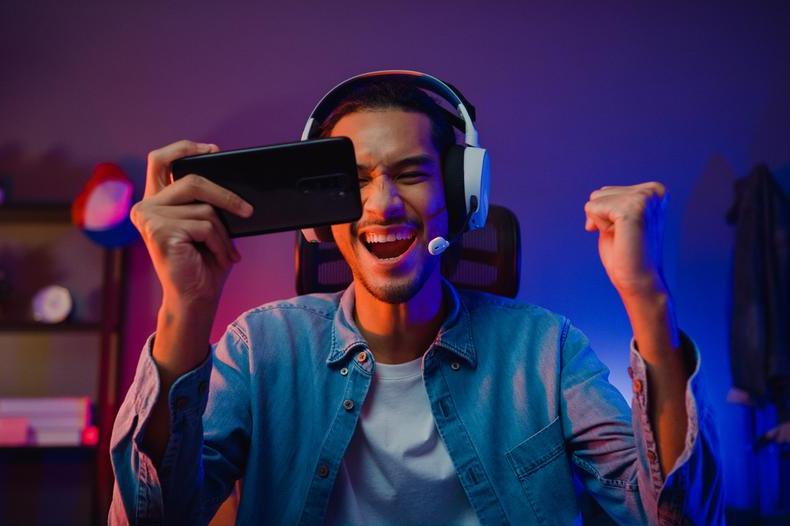Copyright and video games
How does the gaming industry use IP protection to create new, exciting projects? We explore how game creators keep making bestselling work.

To understand the ways in which video games are protected by copyright, it’s important to first appreciate what goes into making a video game, and the context of the market in which they exist.
Video games are a $190 billion global industry and growing. Putting that into context, that’s bigger than the revenues generated by the film and music industries combined.
It’s an extremely varied industry, which ranges from interactive, narrative-driven and deeply immersive games like “The Last of Us”, to fast-paced and esports-oriented first-person shooters like “Valorant”, and hypercasual titles like “Candy Crush”.

Games also have a hugely diverse player base, some being incredibly successful but almost completely unknown outside of their dominant markets.
For example, the third-largest game in the world by number of players is “Crossfire”, which is incredibly popular in China and South Korea (with over 1 billion players) but relatively unknown in Europe and the US.
There is also a vast ocean of mobile games.
These typically have much shorter development cycles and can be astonishingly lucrative, if only they can make themselves visible above the noise in the ultra-competitive ecosystems of the major app stores.
What goes into making a game?
In addition to this great diversity, one of the challenges from an IP perspective is that video games are complex works.
A chart-topping pop song might contain three copyrights (composition, sound recording and lyrics). A film will have more.
But a video game combines both of these, together with copyright in the underlying software and a wide array of other components.
And whilst a song is 3-5 minutes long, and a film might be 2-3 hours, a modern narrative-driven game could easily have 40+ hours of main story content and more than 100 hours of content in total.
A lot of that content may be fully acted (using motion capture) and voiced by professional actors. The story
would likely be written by a professional or celebrity writer.
Creative teams would work on the concept art, which eventually evolves into the textures and animated 3D models that you see in-game.
We are also seeing increasing crossovers with traditional forms of entertainment like film and television, for example the excellent “Death Stranding” directed by Hideo Kojima and starring Norman Reedus.
The crossovers go both ways, with game-to-screen adaptations also on the rise – for example “The Last Of Us” is in the process of being adapted into a series by HBO, slated to debut in 2023.
Aside from the creative components, you also need a game. No matter how good something looks and sounds, if it’s not fun to play, people won’t buy it.
You need solid gameplay mechanics, a well-designed gameplay loop, and a monetisation strategy which treads the border between not being too aggressive and ensuring the game makes money.

Some games give players the freedom and tools to create their own content within the confines of the game.
This is known as UGC (user generated content). It could be in the form of customisable characters, vehicles or locations.
All of this needs to be coded, extensively tested, and must pass certification for the relevant platforms. The game then needs to be marketed and distributed through all the usual channels.
The role of copyright
Most of these components of a game discussed above can be protected by copyright in one form or another. In fact, the video game itself is essentially a collection of copyright works.
There are some other IP rights in play too, of course, but for the most part it’s copyright.
That is what gets licensed from the game developer to the publisher (which brings the game to market) and ultimately to platforms, distributors, merchandisers and so on.
Ultimately, that is what the user gets when they buy or download the game – a limited, non-exclusive copyright licence coupled with some additional contractual terms, in the form of an End User Licence Agreement.
By and large, gone are the days of purchasing and owning a physical cartridge or disc. Nowadays, you could say that, without copyright, there is no product.
As well as selling and licensing the game, copyright plays a pivotal role in enforcement.
The issue of ‘cloning’ – making games which imitate in whole or in part an existing game, to divert some of the established game’s users, in the hope of making some money before the clone is shut down by the rights holder – has been around for almost as long as games themselves, and is particularly rife on mobile.

Copyright remains one of the main tools in the armoury to combat this. The same applies to cheats, modifications, hacks and unofficial servers, the creation and use of which will almost always involve unauthorised acts of infringement in respect of one or more copyright works.
Copyright can also be called upon to deal with leaks of content from early access copies or unfinished game builds; as well as businesses which unlawfully re-sell digital currencies and deal in the grey market resale of keys (unique codes used to activate downloadable digital versions of a game).
The limitations of copyright protection
Historically, English law required three ingredients for a work to be protected by copyright:
(1) Originality – a relatively low bar which, depending on the work, either meant sufficient skill and labour or the author’s own intellectual creation;
(2) Fixation –that the work must be recorded in some form, as opposed to being purely in the creator’s mind, and
(3) that the work must fall into one of the categories of works listed in the CDPA (Copyright, Designs and Patents Act) 1988 – the most important of which, from a video game perspective, are LDMA works (literary, dramatic, musical and artistic), sound recordings and films.
For many years, it was understood that this was a ‘closed’ list. A work which did not fall into one of these categories was therefore not protected.
The problem is that video games do not neatly fall into any one of these categories as a whole – they are combination of all of them. Equally, some components of video games – such as game mechanics, or character traits – do not fall neatly into any of these categories.
You might legitimately wonder why an entertainment medium which is bigger than film and music does not have its own category of copyright protection under the CDPA, but that is a topic for another day.
Expanding protection
The situation has improved in recent years, however. Successive copyright cases at the EU level (pre-Brexit) and in the UK have worn away at the notion of a ‘closed list’, to the point that it now arguably no longer exists.
The sequence of decisions can be traced back to a decision made by the CJEU Court of Justice of the European Union. Levola, a company that makes spreadable cheese were involved, the CJEU held that copyright could not subsist in the taste of cheese, as it was too subjective.
This approach was confirmed and expanded upon in another CJEU decision (Cofemel) in which the CJEU stated that two (and only two) criteria must be fulfilled in order for copyright to subsist:
(1) the work must be the author’s own intellectual creation (the EU originality test), meaning it must reflect the personality of its author, as an expression of their free and creative choices; and
(2) the work must be identifiable with sufficient precision and objectivity. In Cofemel, the upshot was that hoodies and jeans could themselves (as opposed to design drawings of that clothing) be protected by copyright.
This approach was endorsed in a case involving the Brompton Bicycle in which the CJEU decided that copyright could subsist in the shape of a bicycle if the above two criteria are met, even if that shape is partly necessary to obtain a technical result.
Because this line of EU case pre-dates the end of the Brexit transitional period, they are relevant to English law, insofar as English Courts must bear them in mind when interpreting English law.
However, because the CDPA 1988 is still drafted in a way which suggests that the list of copyright works is exhaustive, this creates something of a tension.
There have been a couple of noteworthy attempts to grapple with this point, although neither has led to a very satisfactory answer. In 2020, during a dispute between Response Clothing and the Edinburgh Woollen Mill, the Court held that a textured fabric could be protected as a copyright work, but rather than accepting that the ‘closed list’ approach is obsolete, it was (somewhat tenuously) categorised as a work of artistic craftsmanship to avoid the issue.
More recently, in a case regarding Del Boy, from the well-known sitcom “Only Fools and Horses” (Shazam Productions))the Court decided that a fictional character could be protected as a copyright work, provided it is original and clearly and precisely identifiable.
Again, the issue of whether the closed list approach of the CDPA is no longer relevant was sidestepped, and in this case the fictional character was technically classified as a literary work.
What these cases illustrate is that the scope of copyright protection for video games is broader than it has ever been, and the long-held distinction between ‘idea’ and ‘expression’ is being stretched.
The EU case law makes it clear that almost anything could be protectable, as long as it meets the two criteria set out in Cofemel.
This could mean that things like formats, gameplay mechanics, and even the video game as a whole – which have historically been difficult to protect – could be protected as copyright works.
We are likely to see cases in the next few years which explore this newfound freedom further and finds its boundaries.
Considering that copyright is free, international in scope (thanks to the Berne Convention) and in most countries does not require registration, this makes it a formidable tool.
It also means it is vitally important for studios and publishers to properly understand and have documentary records of what copyright exists in their titles, who created it, who owns it, and how they can be enforced.

